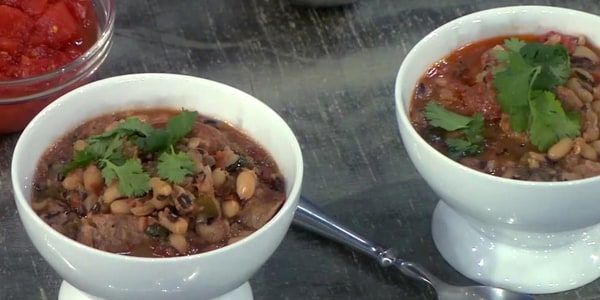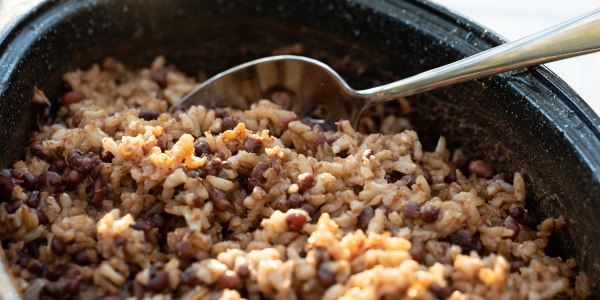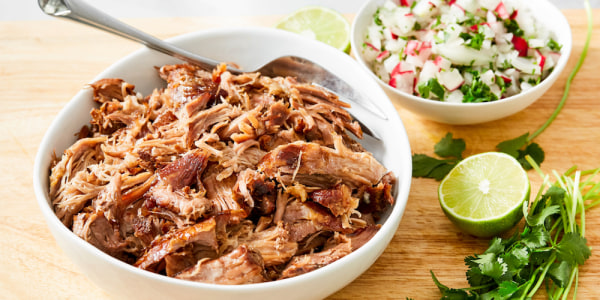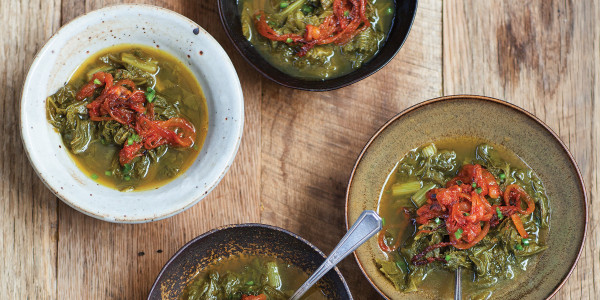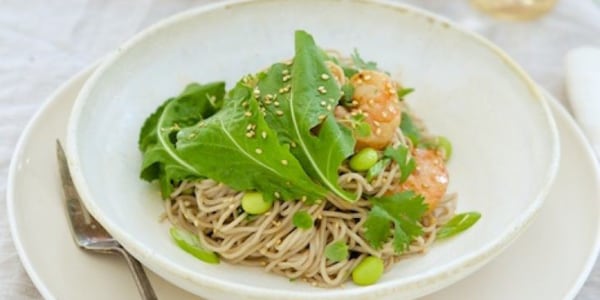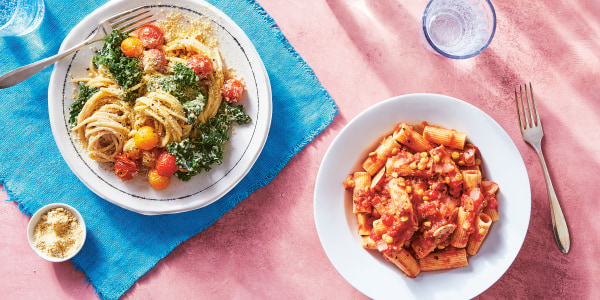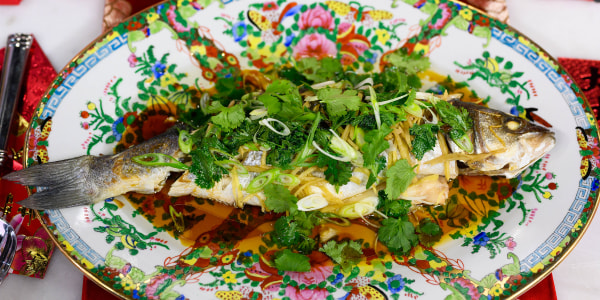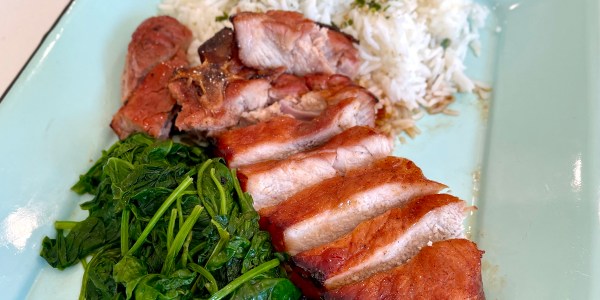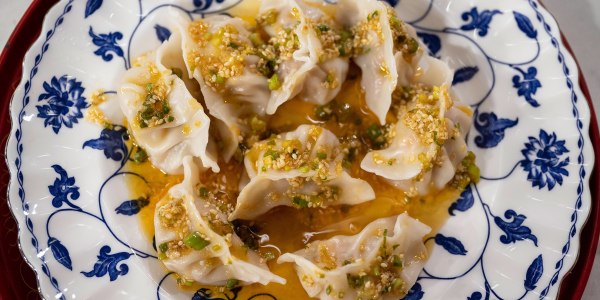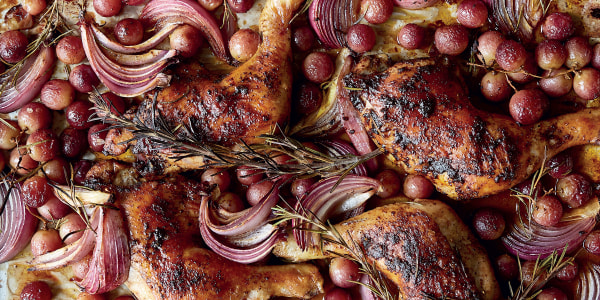New year, new luck? Let’s hope so.
As we say goodbye to 2024 and welcome 2025, we’re filling our plates with foods that may offer good luck and good fortune in the new year. After the past few years, we want health, wealth and a heaping plate of good luck all year long. Even if you don’t consider yourself to be superstitious, there’s no harm in consuming delicious foods like black-eyed peas, lentils and noodles. If you start off the new year with a good bite to eat, so be it.
Adrian Miller, the Soul Food Scholar, tells TODAY.com that it’s important to celebrate foods across various cultures.
“It’s important because one can see the similarities of beliefs across cultures, the traditions are fun, and usually quite delicious,” he says. “Also, one can learn a lot about a culture from such beliefs.”
Ahead, we’re taking a trip around the world to better understand edible traditions that may just offer a little bit of luck in 2025.
Black-eyed peas
Black-eyed peas, which are consumed widely across the American South, are said to symbolize good luck in the new year.
“My argument is that it’s a riff off the old ‘first footer’ tradition,” Miller says. “The belief was that the first visitor who should cross your threshold in the new year is a dark-haired person with dark eyes. I see black-eyed peas as a substitute for the dark eyes.”
In this recipe, Gail Simmons serves up a hearty stew that’s not only delicious, but might just help you make this next year the luckiest ever.
Rice
Rice symbolizes fertility prosperity in many Asian countries.
“They swell — increase in size — and are numerous,” Miller says. It’s the same reason why rice was once a popular tradition at weddings. Guests would throw grains of rice at the newlywed couple as they exited the ceremony.
Pork
Pork symbolizes good health and luck across Europe.
“Because pigs root forward with their snout and feet (or) hooves,” Miller explains.
This recipe from Dani Spies takes just 15 minutes of prep time. Boneless pork butts cooks on its own for several hours, so you can enjoy your New Year’s party instead of being stuck in the kitchen.
Get The Recipe
4-Ingredient Slow-Cooker Kalua Pulled Pork
Cabbage and other leafy greens
Cabbage and other leafy greens symbolize prosperity in some European countries.
“They represent paper currency,” Miller explains.
Warm, savory and tangy sweet, this dish from Bryant Terry is everything a side of greens in potlikker should be.
Noodles
In many Asian households, noodles symbolize longevity.
“Noodles represent longevity in Asian cultures because they are so long,” Miller says.
Chef Mark “Gooch” Noguchi, co-founder of Pili Group and Chef Hui, tells TODAY.com that noodles are paramount for good luck in the new year.
“In our house, we always eat soba at midnight for good luck,” he says.
This fiery dish from Candice Kumai is a modern take on soba featuring shrimp, a soy and sesame dressing, edamame, arugula and fresh herbs.
Lentils
In Europe, lentils are seen as a symbol of prosperity.
“They swell (or) increase in size, (are) numerous, and the yellow color suggests gold coins,” Miller says.
This recipe from Samah Dada is a plant-based twist on a traditional and iconic pasta dish, which uses lentils in lieu of ground beef or pork.
Fish
Fish — especially whole — symbolize luck in Asia.
“Fish are lucky, because fish swim forward and represent abundance,” Miller says.
This is a super easy but exceptionally flavorful and fragrant preparation of whole fish by Joanne Chang.
Get The Recipe
Whole Steamed Fish with Ginger and Scallion
Osechi-ryōri
Osechi-ryōri, traditional Japanese New Year foods, symbolize good luck.
“There are chefs in Japan who specialize in this,” Noguchi tells TODAY.com of the multi-tiered food boxes. “They can make enough money in the new year season that they don’t have to do anything else for the rest of the year.”
Red-colored foods
The color red symbolizes fortune.
“In many Asian cultures, red is auspicious, so dishes are colored that way,” Miller says.
Jet Tila achieves the red, lacquered look in his char siu from soy sauce, hoisin sauce and ketchup. If you want to take it to the next level, add a couple drops of red food coloring.
Get The Recipe
Char Siu (Cantonese Sweet and Sticky Barbecue Pork Chops)
Dumplings
Dumplings, which can resemble gold bars, symbolize wealth or a large, prosperous family in Asian traditions.
Get Ching-He Huang’s pork and prawn dumplings recipe, which was handed down to her by her grandmother.
Grapes
“Spain and several Latin countries eat grapes at midnight on New Year’s Day,” Miller says. “One grape for each chime of the clock.”
In this recipe (perfect for New Year’s Eve dinner), Queer Eye’s Antoni Porowski pairs juicy, bursting sweet grapes with charred red onion, loads of rosemary and crispy and ancho chile-rubbed chicken.
Ozoni
Ozoni, a special, miso-based soup enjoyed on New Year’s Day in Japan, symbolizes luck.
